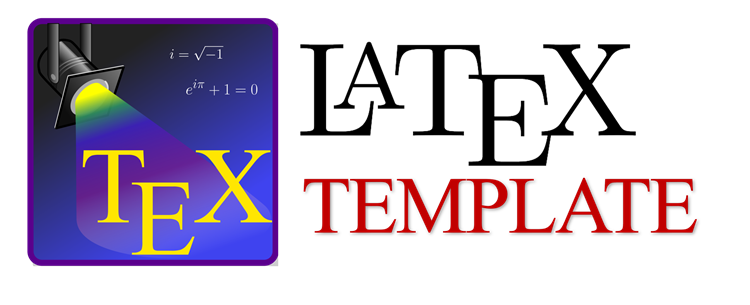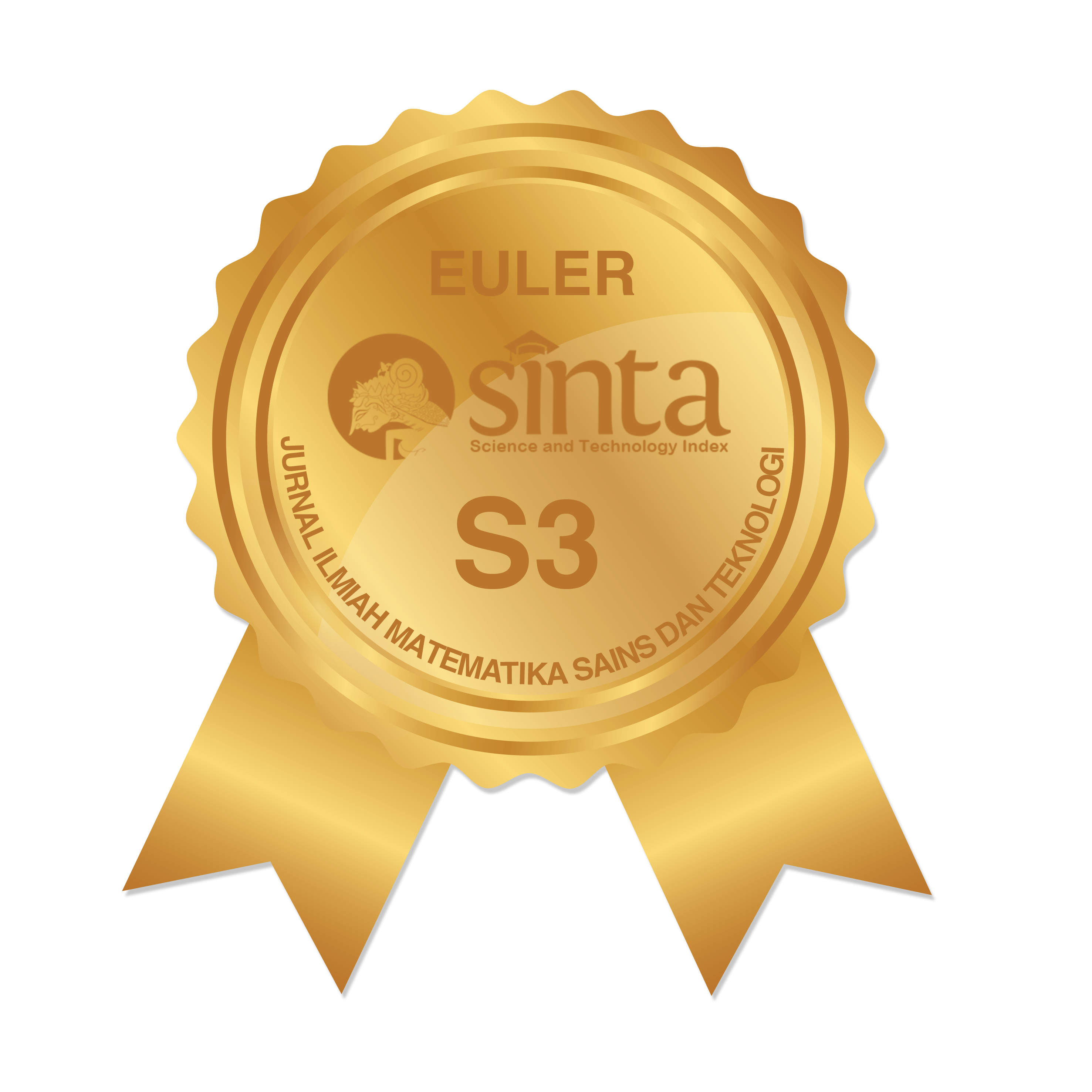Pemodelan Numerik Tsunami untuk Mengestimasi Waktu Tiba dan Ketinggian Maksimum Gelombang Tsunami di Teluk Amurang
Abstract
Keywords
Full Text:
PDFReferences
Kementerian Energi Dan Sumber Daya Mineral, "Potensi dan Mitigasi Bencana Geologi" 2019.
A. C. Effendi dan S. S. Bawono, Peta Geologi Manado, Edisi 2. Bandung: Pusat Penelitian dan Pengembangan Geologi, 1997.
A. Socquet, dkk., "Microblock rotations and fault coupling in SE Asia triple junction (Sulawesi, Indonesia) from GPS and earthquake slip vector data" J Geophys Res Solid Earth, vol. 111, no. 8, Agu 2006, doi: 10.1029/2005JB003963.
Pusat Studi Gempa Nasional (PusGen) dan Pusat Penelitian dan Pengembangan Perumahan dan Permukiman (Indonesia), Peta Sumber Dan Bahaya Gempa Indonesia Tahun 2017. 2017.
Badan Nasional Penanggulangan Bencana, "Laporan Situasi Gempabumi M7,4 & Tsunami Sulawesi Tengah" 2019.
S. L. Soloviev and C. N. Go, Catalogue of tsunamis on the western shore of the Pacific Ocean. Canada: Institute of Oceanic Sciences, 1984.
F. Pandey, G. Pasau, dan S. H. J. Tongkukut, "Simulasi Penjalaran Tsunami di beberapa Pantai di Sulawesi Utara sebagai Upaya Mitigasi Bencana" Jurnal MIPA Unsrat Online, vol. 4, no. 2, pp. 103-107. 2015. Tersedia pada: https://ejournal.unsrat.ac.id/index.php/jmuo/article/view/7977
Badan Pusat Statistik Provinsi Sulawesi Utara, "Provinsi Sulawesi Utara Dalam Angka 2022" Sulawesi Utara, 2022.
R. O. Wahyu, dkk., "Pemodelan Inundasi Tsunami Di Sepanjang Pesisir Kota Manado Akibat Gempabumi M8,5 Di Zona Subduksi Sulawesi Utara" Jurnal Meteorologi dan Geofisika, vol. 19, no. 1, p.13, 2018. doi: 10.31172/jmg.v19i1.448
S. P. D. Sriyanto, N. Nurfitriani, M. Zulkifli, dan S. N. E. Wibowo, "Pemodelan Inundasi dan Waktu Tiba Tsunami di Kota Bitung, Sulawesi Utara Berdasarkan Skenario Gempabumi Laut Maluku" GEOMATIKA, vol. 25, no. 1, p. 47, Mei 2019, doi: 10.24895/jig.2019.25-1.959.
M. Nasir, M. Ikhsan, dan D. A. Amir, "Estimasi Waktu Dan Tinggi Gelombang Tsunami di Lhok Kruet Kabupaten Aceh Jaya" Jurnal Teknik Sipil dan Teknologi Konstruksi, vol. 1, no. 1, pp. 84-95, 2015. doi: 10.35308/jts-utu.v1i1.724
S. Widada, I. M. Darda, dan A. Satriadi, "Identifikasi Wilayah Terdampak Tsunami Berdasarkan Peta Ancaman Tsunami di Kabupaten Lumajang, Jawa Timur" Buletin Oseanografi Marina, vol. 11, no. 3, pp. 291-305, Sep 2022, doi: 10.14710/buloma.v11i3.44032.
E. S. Ratuluhain, Y. A. Noya, E. Pradjoko, Rahman, dan R. D. Hukubun, "Rekonstruksi Tsunami Mentawai dengan Menggunakan COMCOT v1.7" NEKTON: Jurnal Perikanan dan Ilmu Kelautan, vol. 2, no. 2, pp. 54-62, Okt 2022, doi: 10.47767/nekton.v2i2.403.
D. L. Wells dan K. J. Coppersmith, "New Empirical Relationships among Magnitude, Rupture Length, Rupture Width, Rupture Area, and Surface Displacement" Bulletin of the Seismological Society of America, vol. 84, no. 4, pp. 974-1002, 1994. doi: 10.1785/BSSA0840040974
X. Wang dan W. Power, COMCOT: a Tsunami Generation Propagation and Run-up Model New Zealand: Lower Hutt, 2011.
Badan Meteorologi Klimatologi dan Geofisika, "Tsunami Early Warning Service Guidebook for InaTEWS-Second Edition" 2012. [Daring]. Tersedia pada: www.facebook.com/InfoBMKGhttp://twitter.com/infoBMKG
W. Kurniawan, E. Bangun, dan B. Prakoso, "Estimasi Ancaman Tsunami di Zona Subduksi Sulawesi Bagian Utara Sebagai Upaya Mitigasi Bencana Tsunami" PENDIPA Journal of Science Education, vol. 5, no. 2, pp. 204-209, Jan 2021, doi: 10.33369/pendipa.5.2.204-209.
DOI: https://doi.org/10.34312/euler.v11i1.19463
Refbacks
- There are currently no refbacks.
Copyright (c) 2023 Adelia Fatimah, Rigolda Djamaluddin, Suria Darwisito, Jane Marianne Mamuaja, Adnan Sjaltout Wantasen, Joshian Nicolas William Schaduw

This work is licensed under a Creative Commons Attribution-NonCommercial 4.0 International License.
Euler : Jurnal Ilmiah Matematika, Sains dan Teknologi has been indexed by:
EDITORIAL OFFICE OF EULER : JURNAL ILMIAH MATEMATIKA, SAINS, DAN TEKNOLOGI |
 | Department of Mathematics, Faculty of Mathematics and Natural Science, Universitas Negeri Gorontalo Jl. Prof. Dr. Ing. B. J. Habibie, Tilongkabila, Kabupaten Bone Bolango 96554, Gorontalo, Indonesia |
 | Email: [email protected] |
 | +6287777-586462 (WhatsApp Only) |
 | Euler : Jurnal Ilmiah Matematika, Sains dan Teknologi (p-ISSN: 2087-9393 | e-ISSN:2776-3706) by Department of Mathematics Universitas Negeri Gorontalo is licensed under a Creative Commons Attribution-NonCommercial 4.0 International License. Powered by Public Knowledge Project OJS. |















